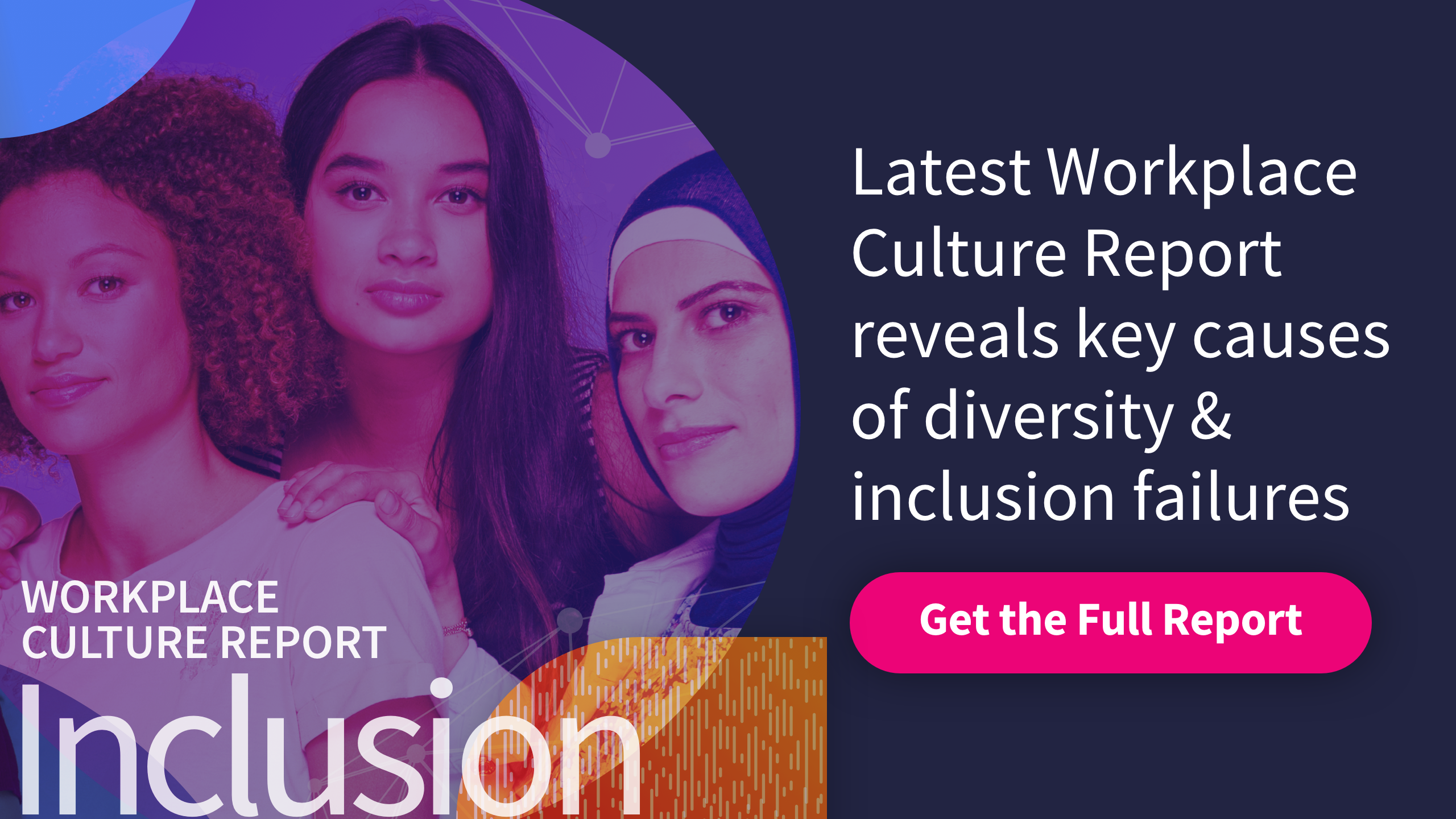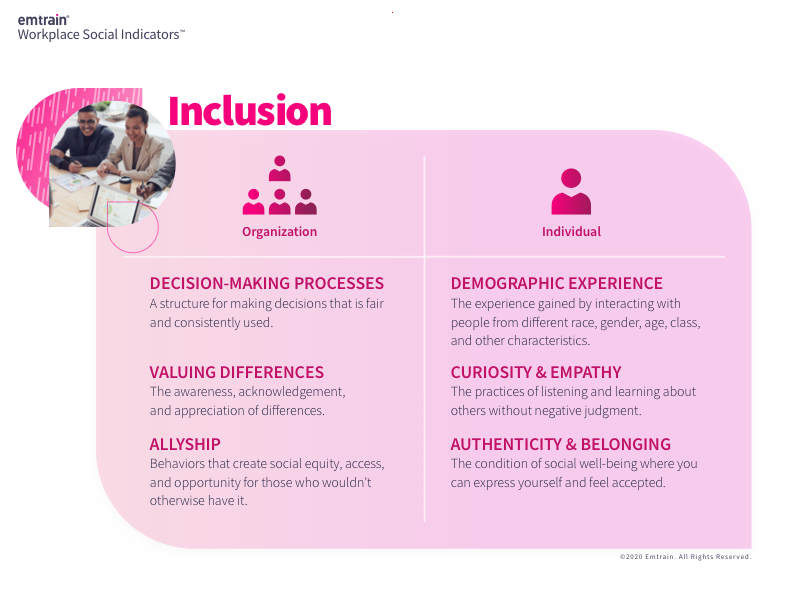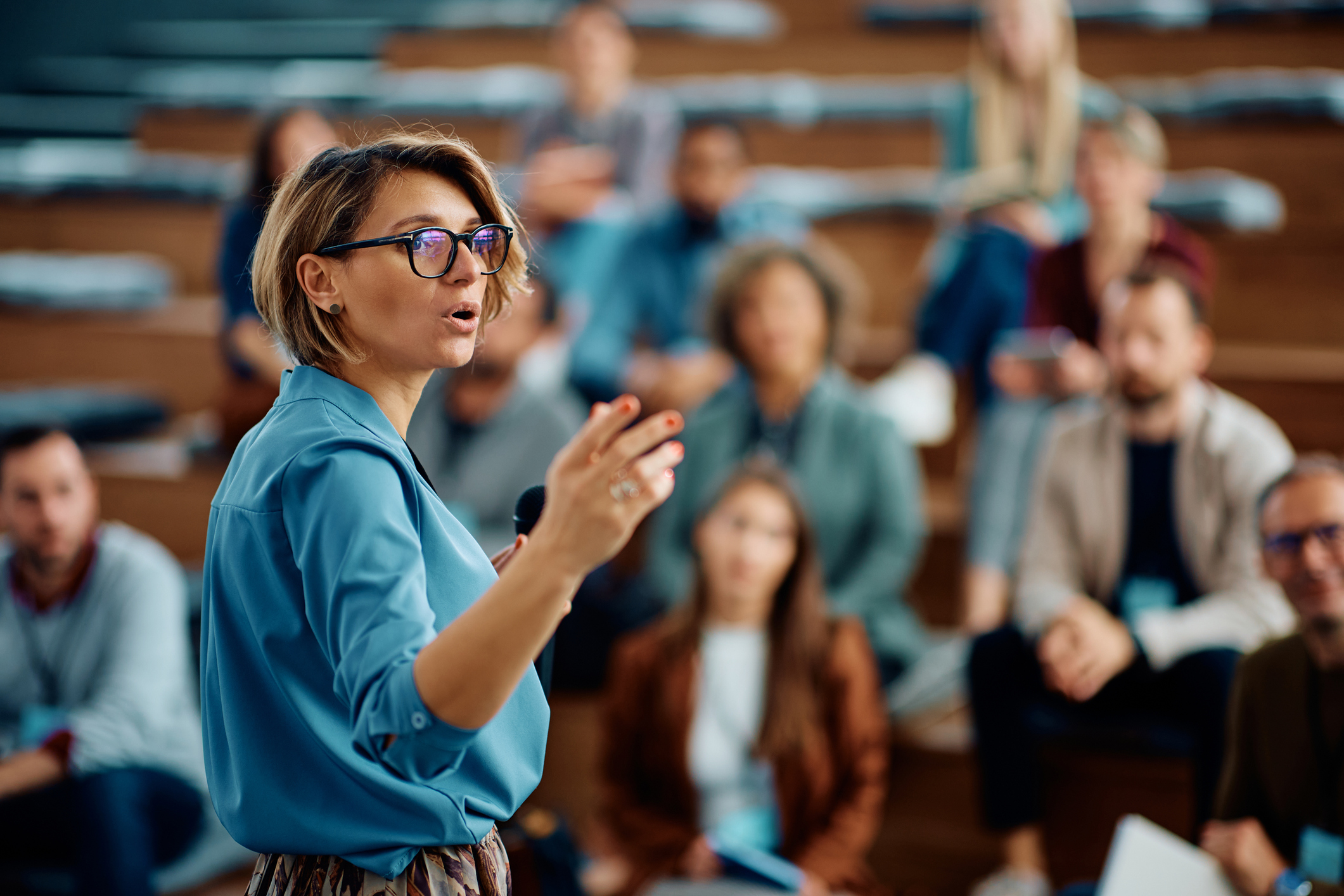Inclusion has been a hot topic over the last few years. Some organizations have strategic initiatives around Inclusion, many others are trying to be responsive to employee needs following the resurgence of the racial justice movement, and some are responding to new requirements for deeper reporting on human capital management from the Securities and Exchange Commission (SEC) or investigations from the Equal Employment Opportunity Commission (EEOC).
We’ve talked to hundreds of clients: we know increasing Diversity is hard, and driving Inclusion is even harder. How do you define Inclusion? How do you know if your tactics are working? How do you measure long-term progress?
Today, Emtrain releases our 2021 Inclusion Report, a deep and focused review of Inclusion in the workplace, as part of our Workplace Culture Report 2021 series. We share our unique approach to assessing Inclusion: treating it as a competency, a set of skills we can all develop and practice. We describe our framework to define and measure Inclusion: six Inclusion Indicators, based on the behaviors that are required to create an inclusive workplace culture. And we reveal Emtrain’s inaugural Inclusion Benchmark that helps us measure and track comparative results over time. Perhaps most importantly, we share the data about inclusion in today’s workplaces, referencing 7 million employee sentiment data points from 83,000+ employees at nearly 100 companies collected from September 2019 to April 2021.
Inclusion Indicators
Our Inclusion Indicators for the organization track Decision-Making Processes, the structures around key human capital management actions (recruiting, promotions, etc), Valuing Differences, the explicit acknowledgment and appreciation of diverse perspectives and life experiences, and Allyship, the creation of social equity for those who wouldn’t otherwise have it.
We also measure individuals’ Demographic Experience, awareness of other cultures, generations, and life experiences, Curiosity & Empathy, ability to listen and learn about others, and their sense of Authenticity & Belonging, in order to thrive and have social well-being.
Why do we say Inclusion is hard? No company has achieved high scores across several Inclusion Indicators on our Inclusion Benchmark. But this is the first time most of these organizations are using a framework to identify and measure key skills and behaviors that are needed to create Inclusion. For our clients, their Indicator scores represent a baseline, a first foundational set of data from which to grow.
We do see that companies are having varying levels of success: some have very low scores, while others are doing much better. When companies have high scores, we’re able to learn what intentional steps they took to build key skills and behaviors. For organizations that want to improve their scores, we’re sharing our knowledge, skill-building training, and actionable insights to help accelerate their progress.
Organizations generally score well on two Inclusion Indicators: Valuing Differences and a component of Allyship. This is a very encouraging foundation, as these behaviors and skills broadly support a more inclusive workplace.
We’re deeply optimistic about our collective opportunity to drive Inclusion because Inclusion is a competency; a set of skills we can develop, practice, measure, and grow. We’re eager for feedback and collaboration with other passionate practitioners. You can find the report here: https://emtrain.com/workplace-culture-insights/












